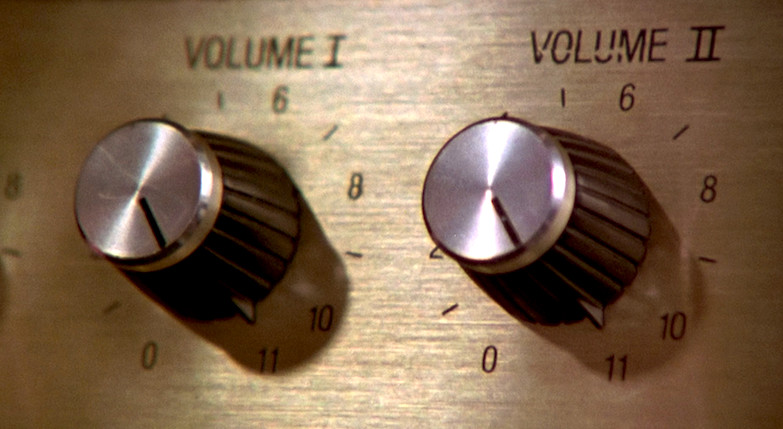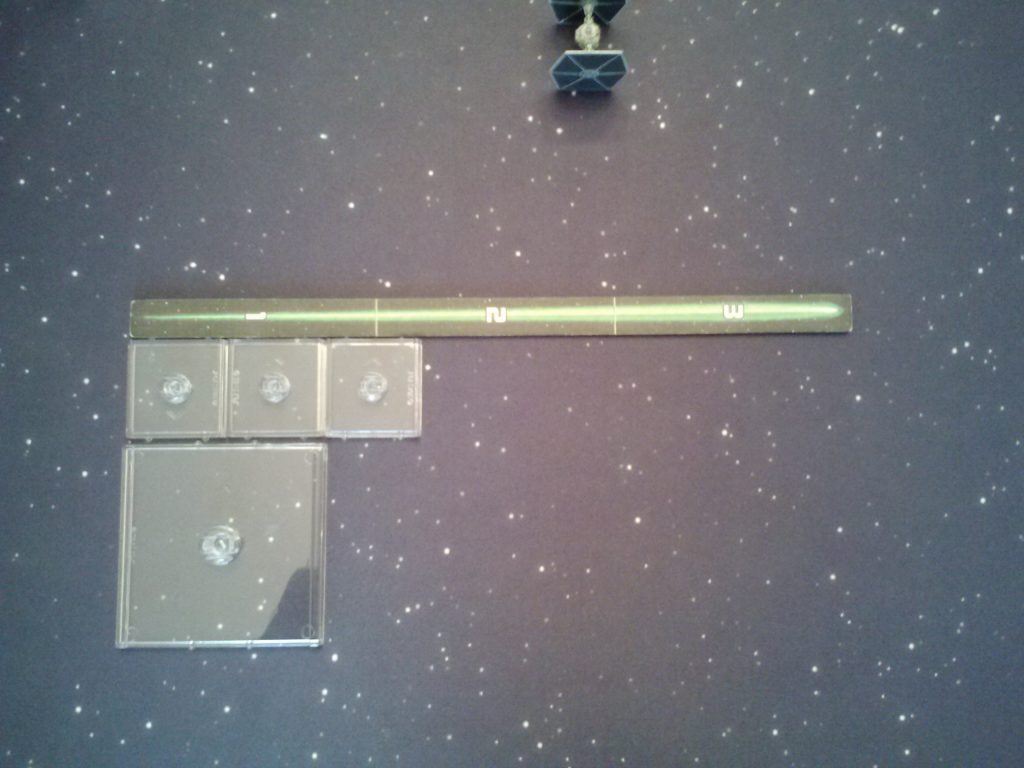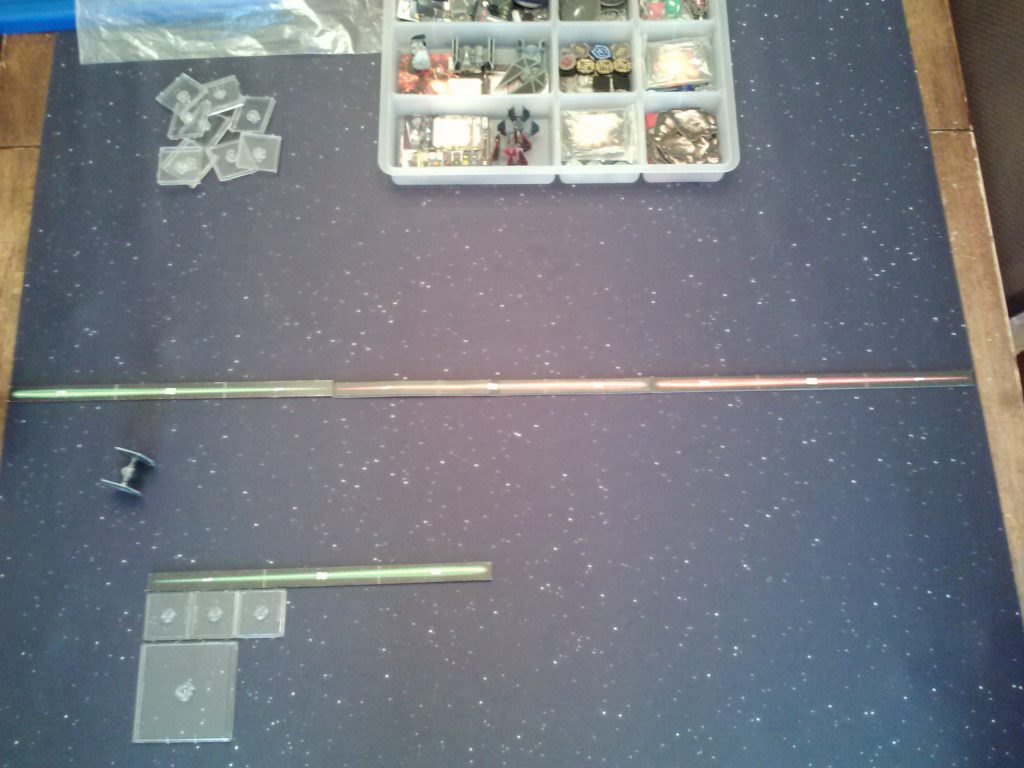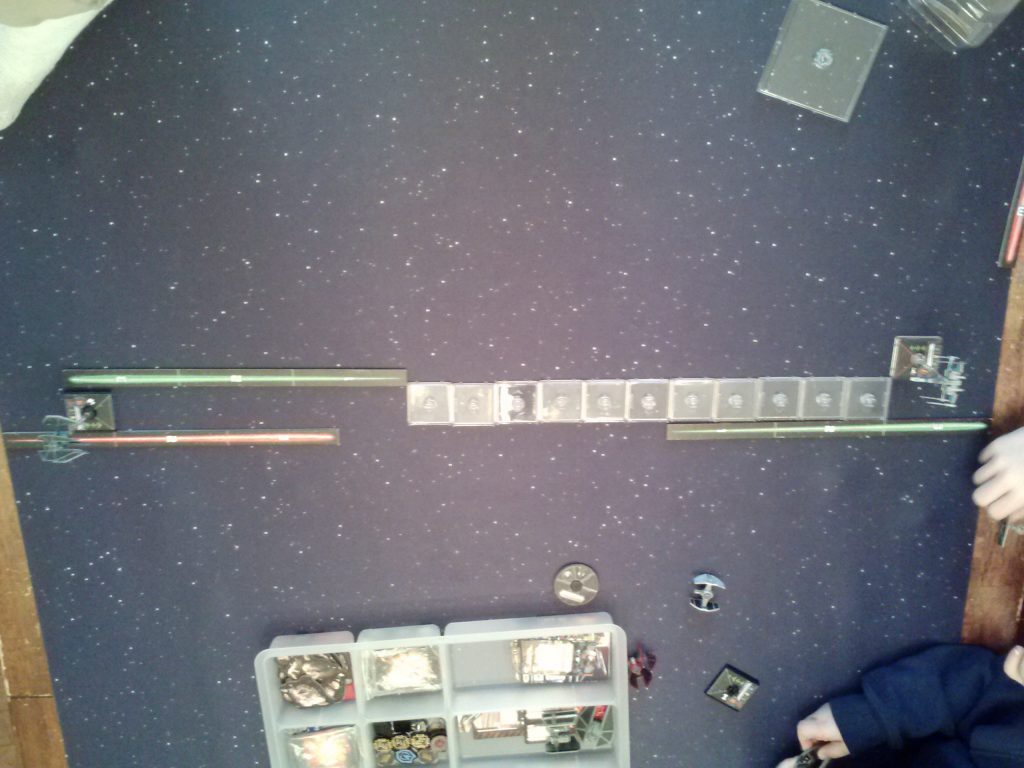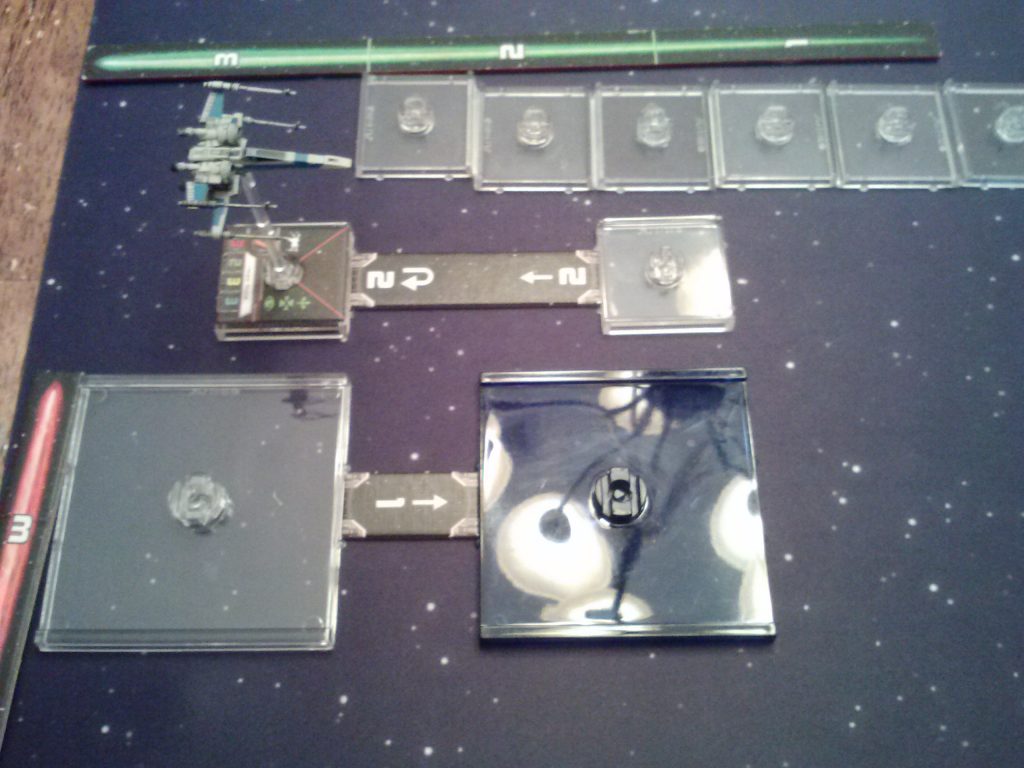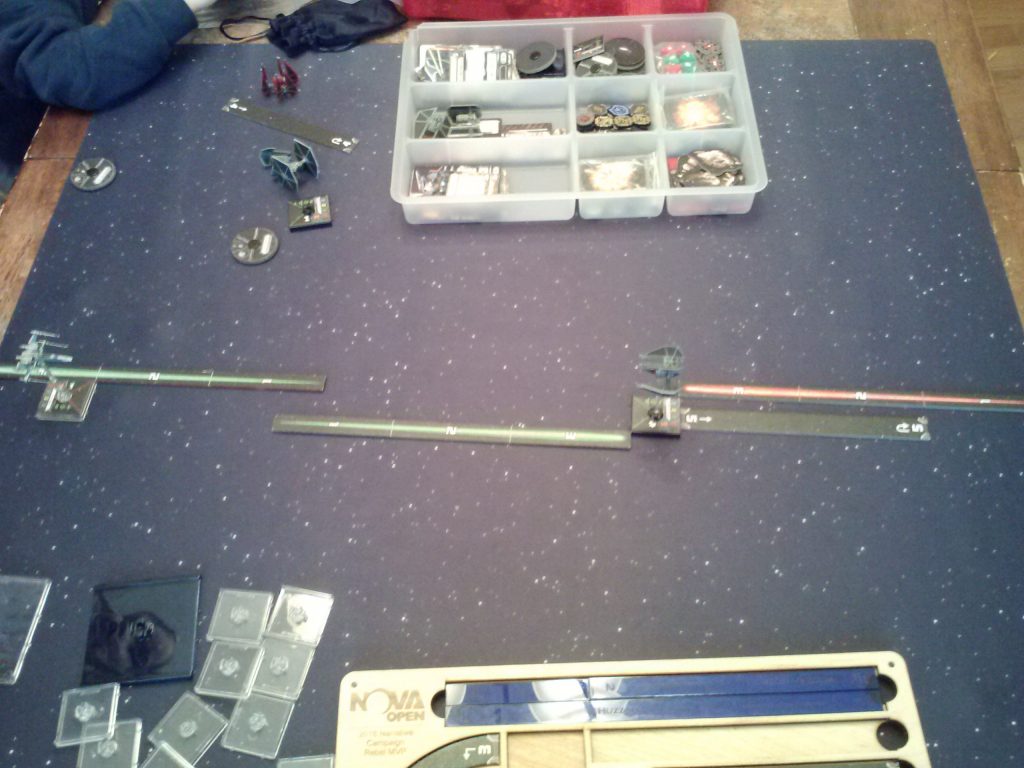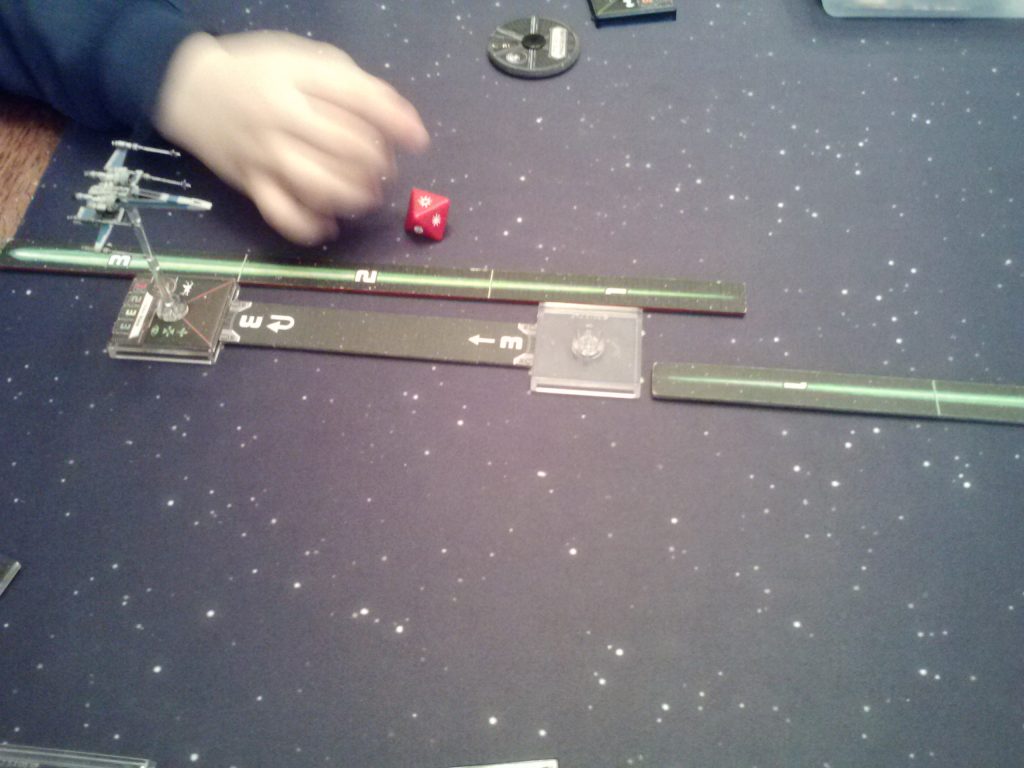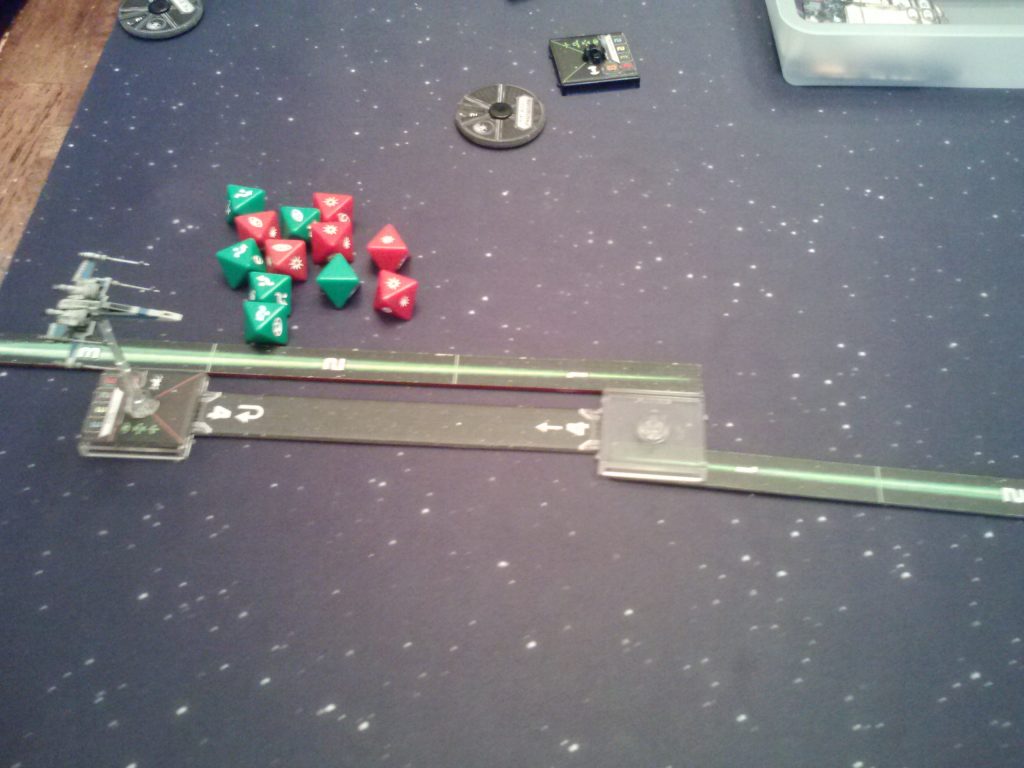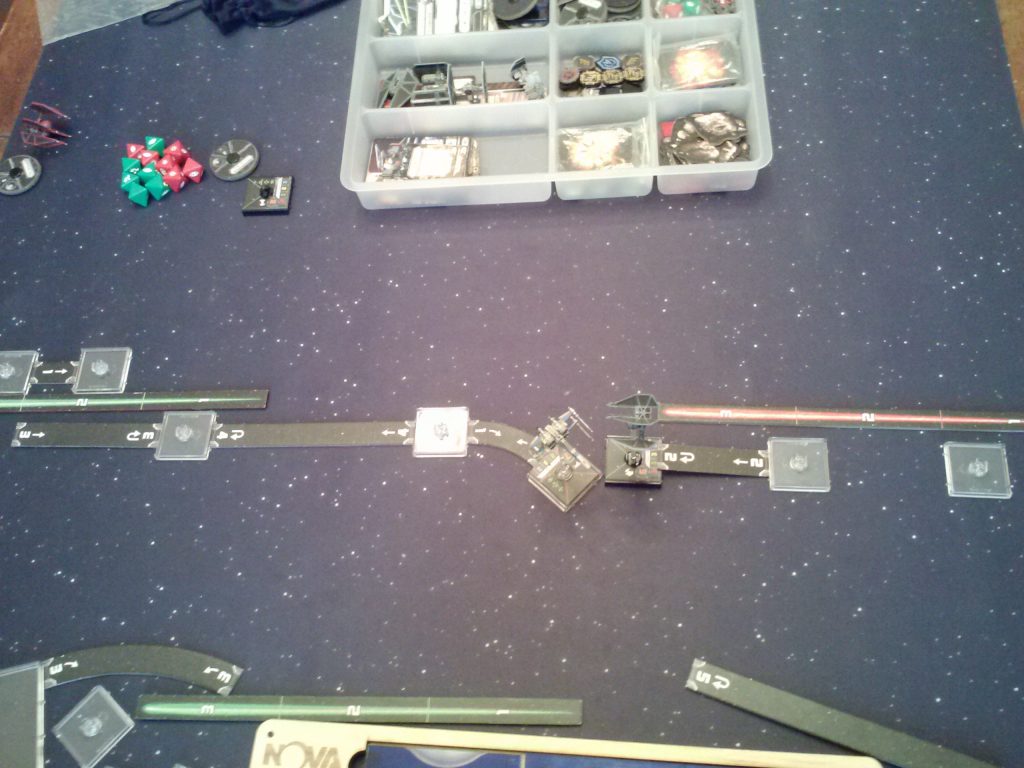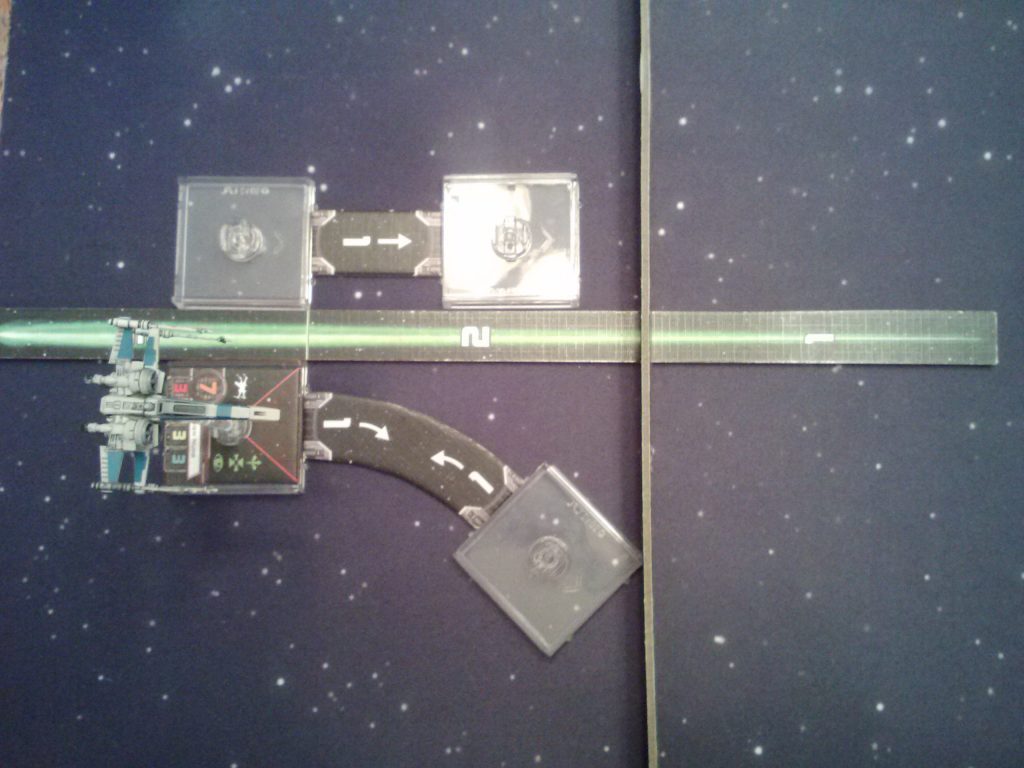X-Wing: A Rule of Eleven How-To


With a few pictures, ChahDresh explores how being able to count to eleven can make a big difference in your games of X-Wing. Jousting lists, especially ordnance-based ones with Harpoon Missiles, are more popular these days than they’ve been in some time. Ordnance is at its best when it’s just at range three: there, you get a bonus defense die against your enemy’s primary attacks, but they get none against your torps and missiles. On the other hand, such lists hate for the first engagement to be at range 1: most ordnance has a range 2-3 restriction, and if your foe can’t fire their shiny (expensive) missiles, then they and all the cards invested in maxing their value (e.g. Guidance Chips) are wasted.
How do we control the range so precisely? How can we leap from “out of range” to “range one” (or even a bump) in a single go? Or, conversely, how do we keep this from happening to our own missile boats?
It starts with an understanding of the dimensions of the game board. Picture time!
The unit of measurement we’ll use in these discussions is the small ship base. Every distance in the game can be described with that as our yardstick. For example: a large ship base is equivalent to two smalls in length. Each range bracket is two and a half small bases long, as so…
How long is the game board? That, too, is measurable: it is ever-so-slightly more than three full range rulers in length, or 22.5 small bases, as you can see:
During deployment, you may set up within range one. Let’s say that you, as most people do, push your ship right to the edge of range 1, and your opponent does too. How far away are you? Remember that each range band is 2.5 small bases. Take the board length, subtract 2.5 for your deployment zone, subtract 2.5 for the enemy’s, and you get just more than 17.5 small bases. Now subtract 7.5 for the length of the range ruler, and we’re just outside ten small bases from our foe.
Congratulations! You’ve just derived the Rule of Eleven:
When you and your opponent have combined to cover eleven small bases’ worth of distance, you will be in firing range.
Advertisement
This rule applies primarily when you’ve lined up right across from your foe. If you’re at too much of an angle it won’t work. Still, when it works, it works:
When counting distance covered, remember to account for your model! If you do a three ahead, for example, your true distance covered is four small bases (since your actual physical movement is from the front of your base at the start to the back of your base at the end). Conduct a two-ahead, and the movement you count for the Rule is “three”. If you’re a big ship, instead of adding one to each maneuver, add two– so a big ship that does a one-ahead actually covers three bases’ distance:
Let’s try an example. Our enemy starts the game with a five-ahead maneuver, as pictured. What’s the fastest maneuver we can execute that’ll keep us out of range?
Answer: three ahead.
A four-ahead by the X-Wing, in this case, would result in shots fired: Imperial movement (5+1) + Rebel movement (4+1) = 11 bases.
We can use this principle to spin off some extra rules, too:
- If you want to get into range 1 of your enemy, you and your opponent must cover 16 total bases’ distance.
- If you want to land a block, you and your opponent must cover 18.5 bases’ distance.
As you can see, boosting can make a big difference here, since the boost adds two bases– or, for some extra sneakiness, an angled boost adds almost half a base of vertical distance, for 2.5 bases altogether.
Barrel rolls, too, can alter the math: if you barrel roll from the front of your base to the back at your new location, you add half a base of vertical distance; if you roll from back to front, you subtract half a base.
This, then, is why Harpoons are so much more powerful than Cruise Missiles, even against enemies not flying in formation. A ship flying with intent to deliver Cruise Missiles can be easily predicted and, with just a little math, countered. Harpoons, on the other hand, allow the missile ships to fly fast or slow and still fire at full effect– meaning the enemy has a much harder task in countering, and has to guess correctly or suffer greatly.
Want to thwart the Rule of Eleven? Use bank maneuvers. Don’t line up right across and force the enemy to come in obliquely. You have to take care to maintain your formation (and not scrape off on obstacles), but if you do, you can force your opponent to use his eyeballs to guesstimate the range instead of his math– and, the Law of Mathematical Unreliability notwithstanding, most people’s eyes are far more fallible than simple arithmetic.
Or, use the rule yourself! It’s not just for people trying to avoid the joust. One of the reasons the Rebel version of modern Harpoon alpha lists might be the best: the ships involved have the one- to four-straights available, giving maximum range control.
~Whether you’re flying with or against ordnance jousters, though, the Rule of Eleven is a very useful tool to have in your arsenal!

